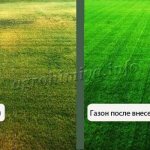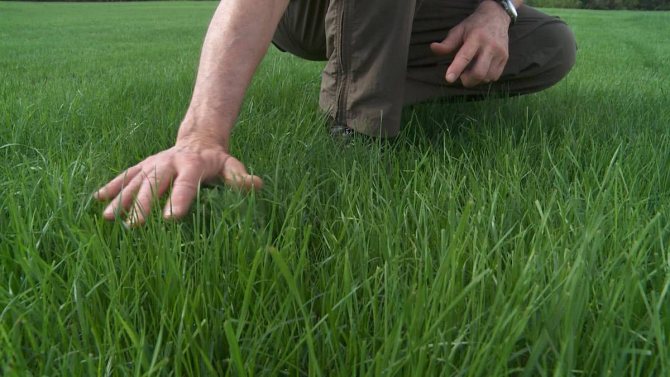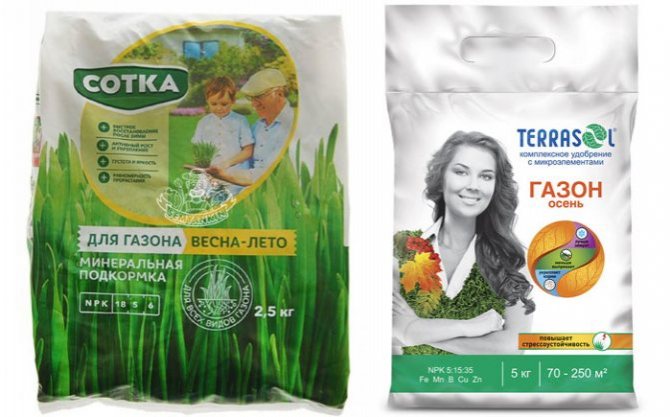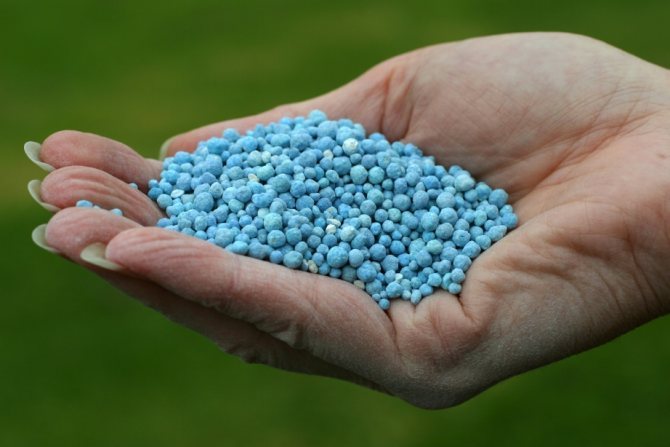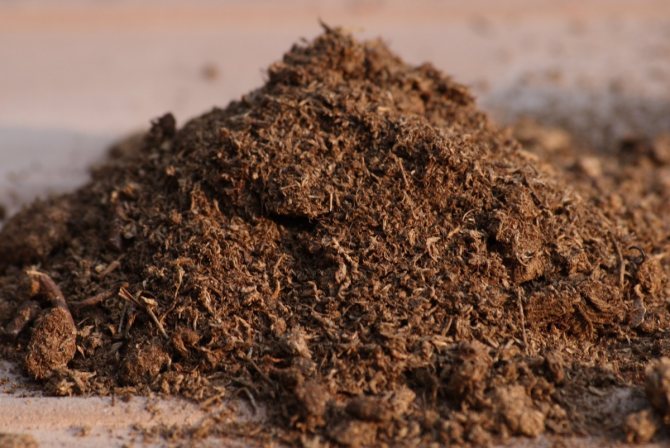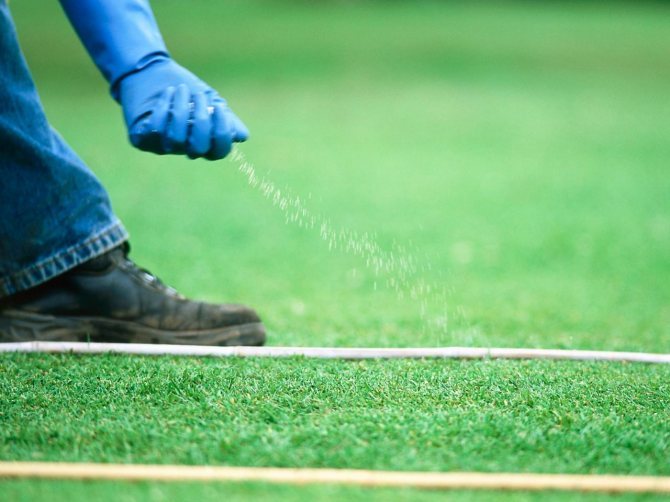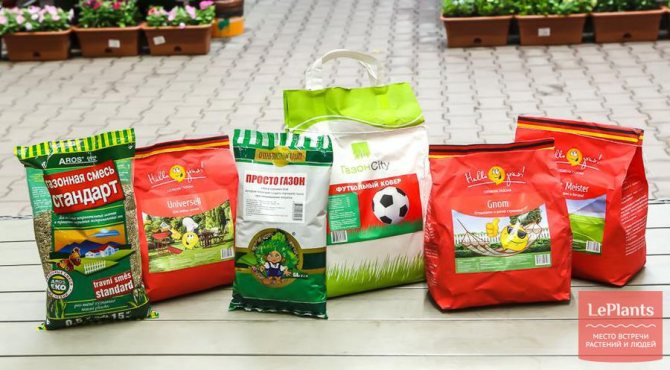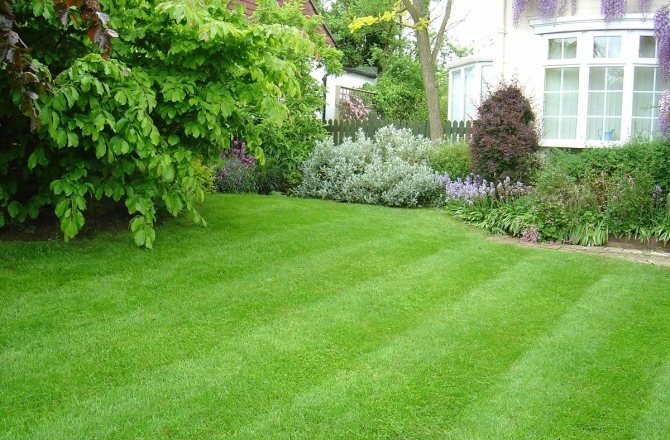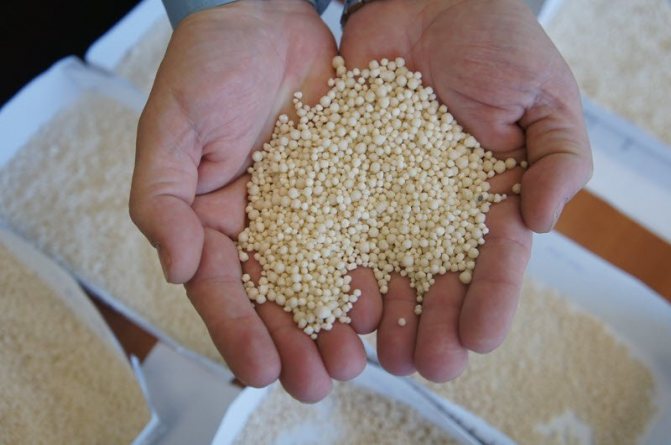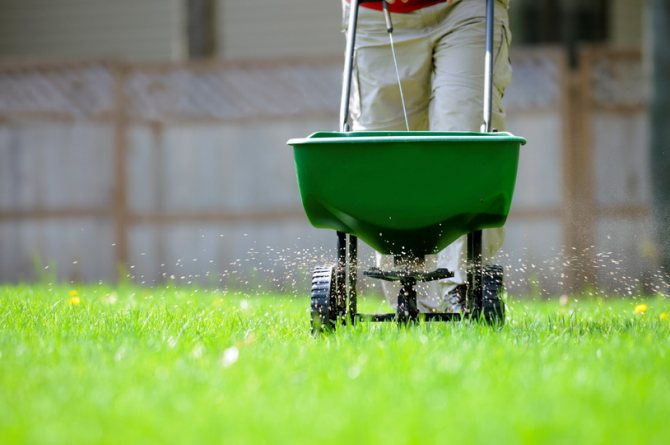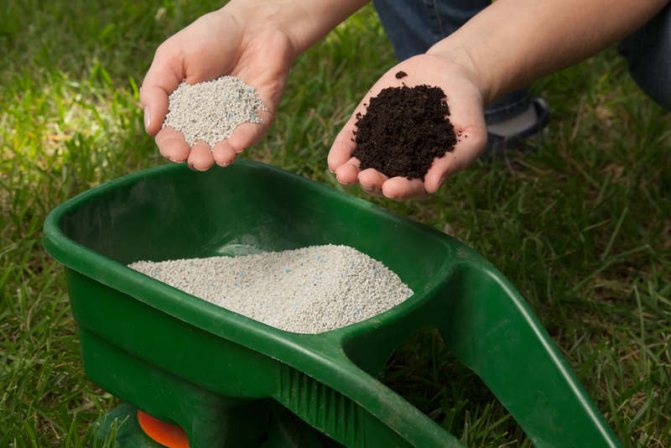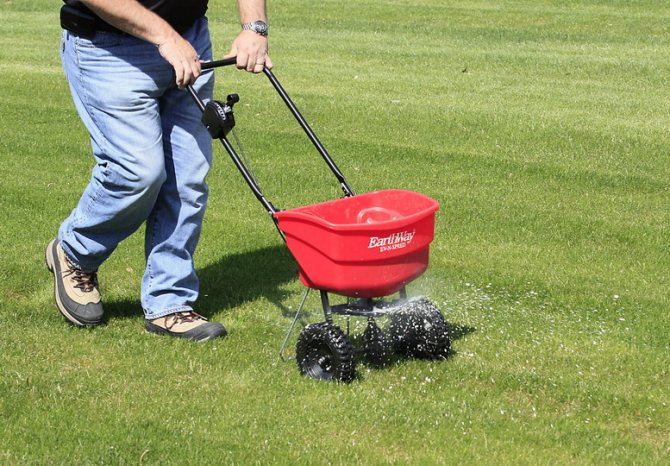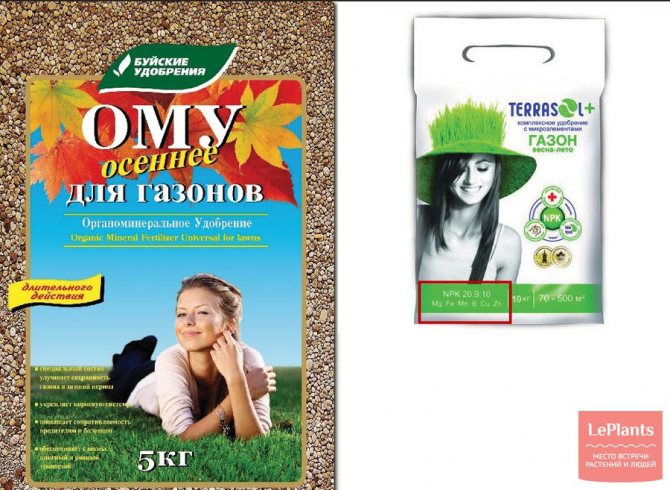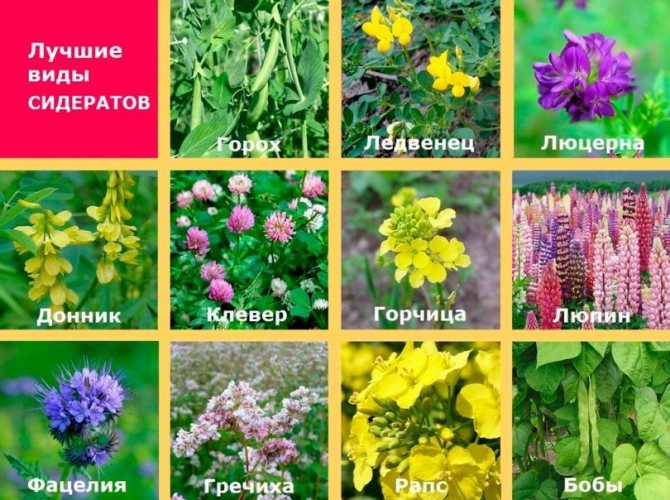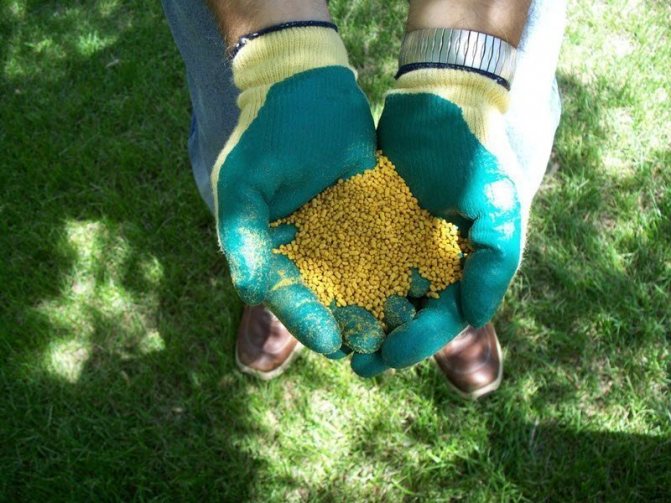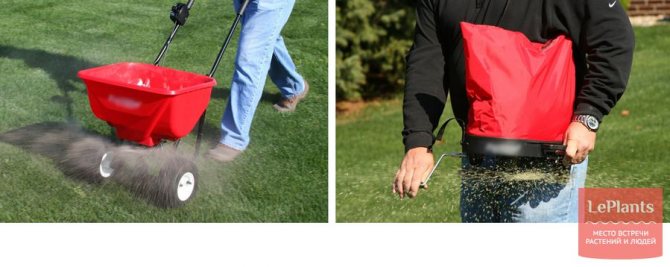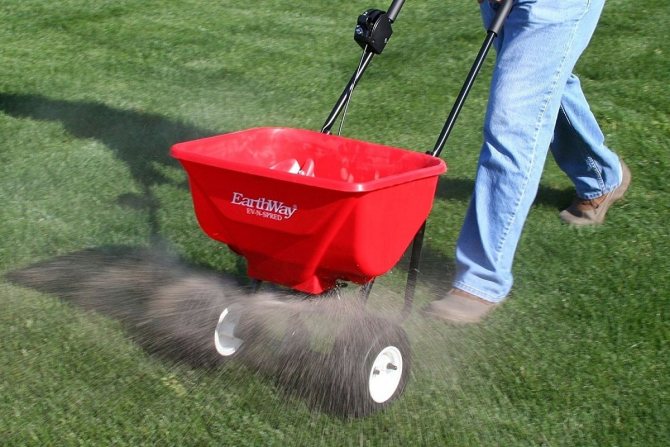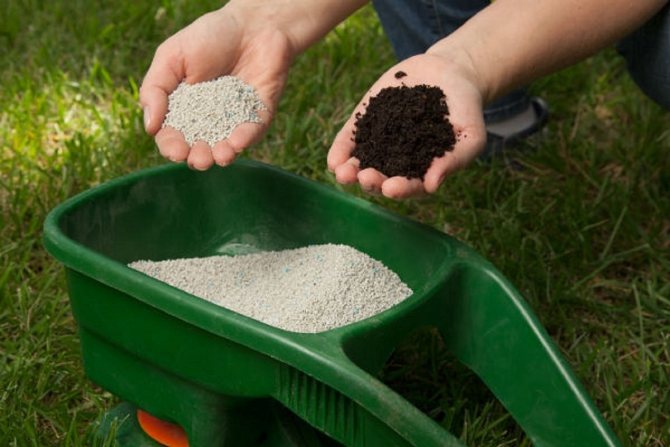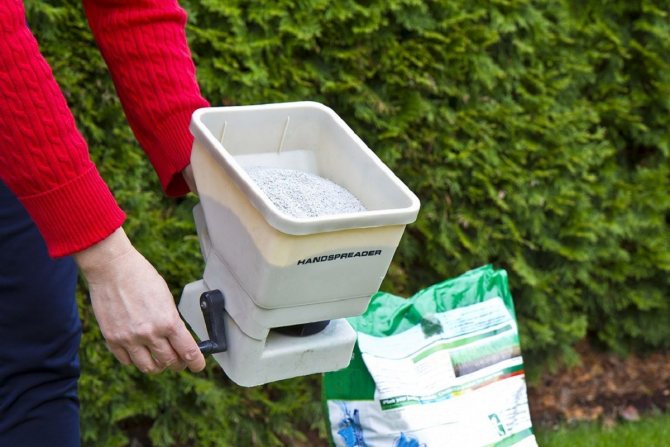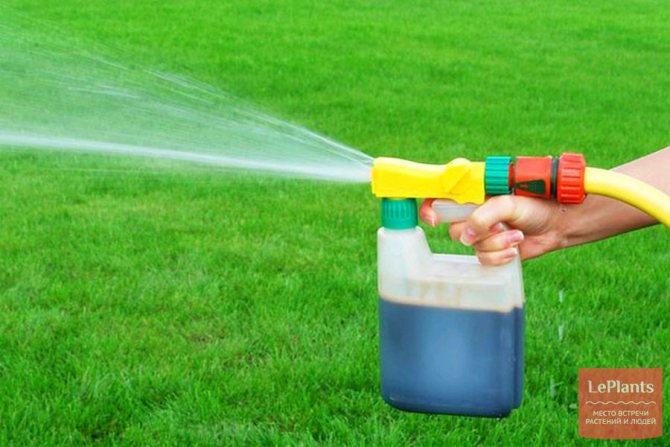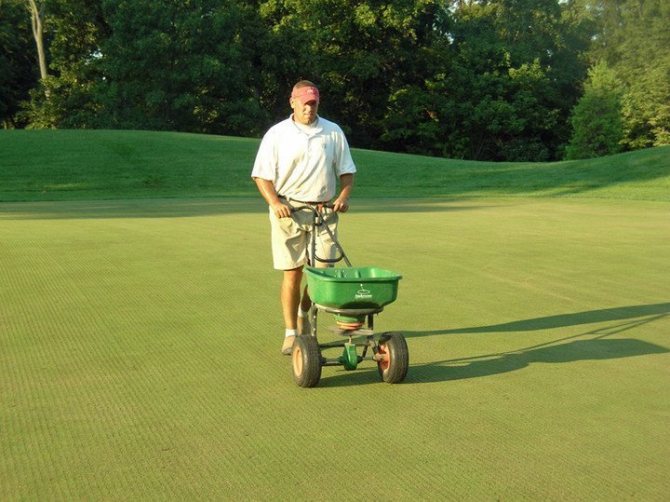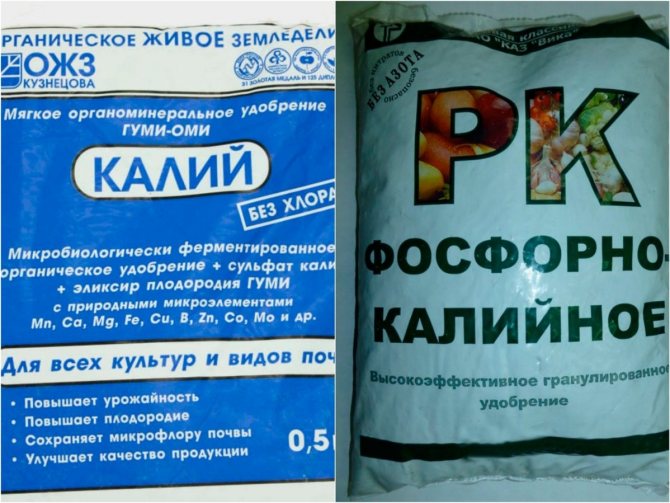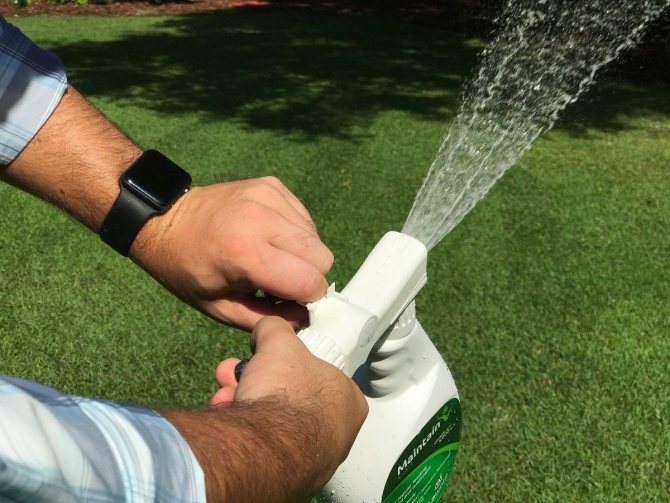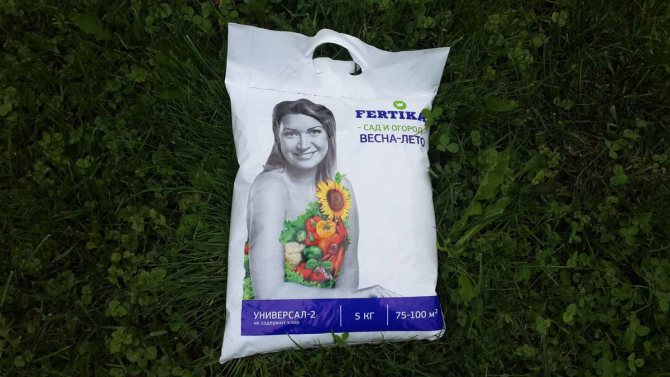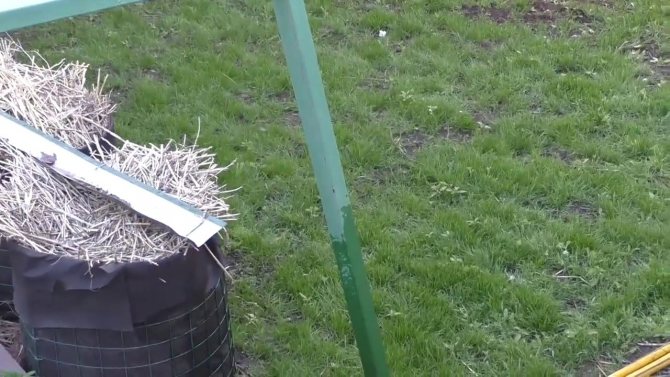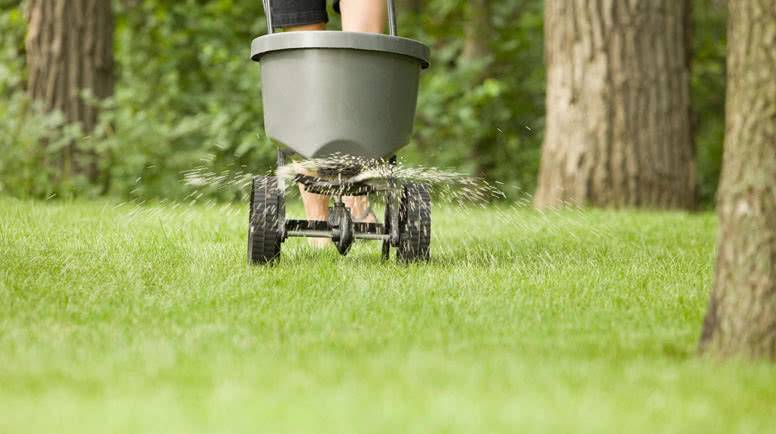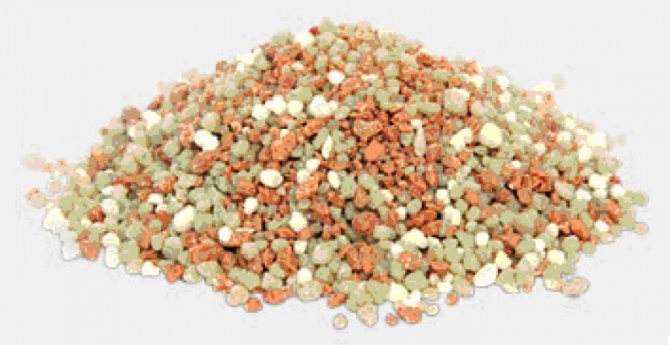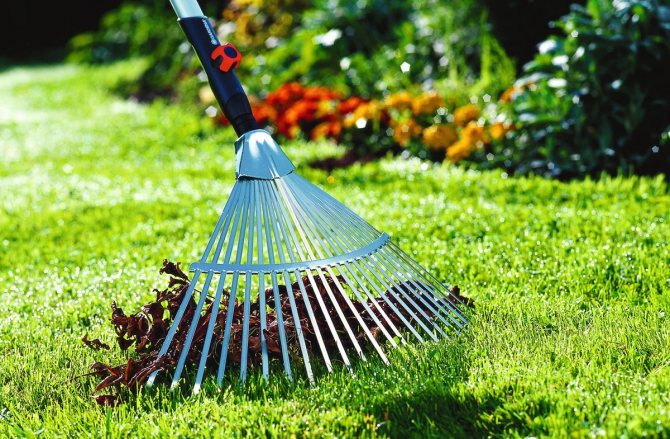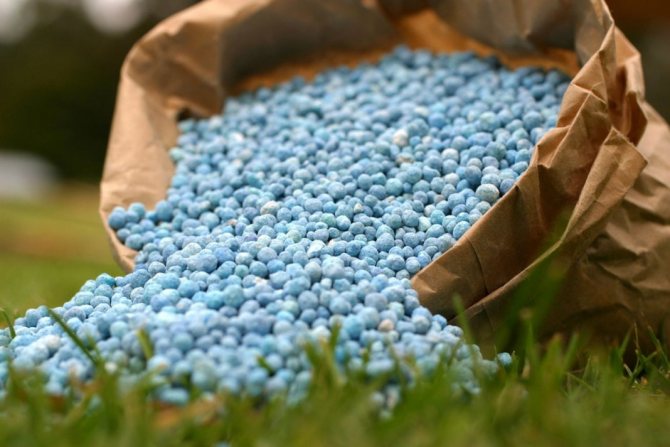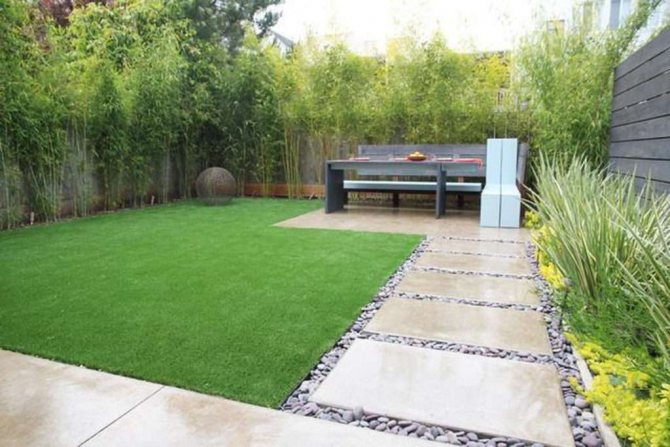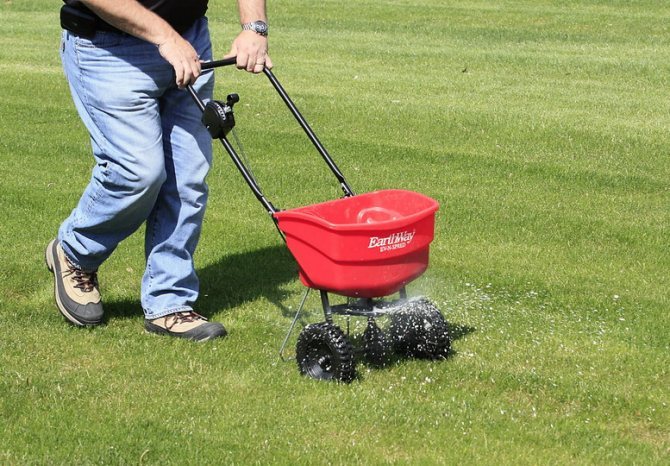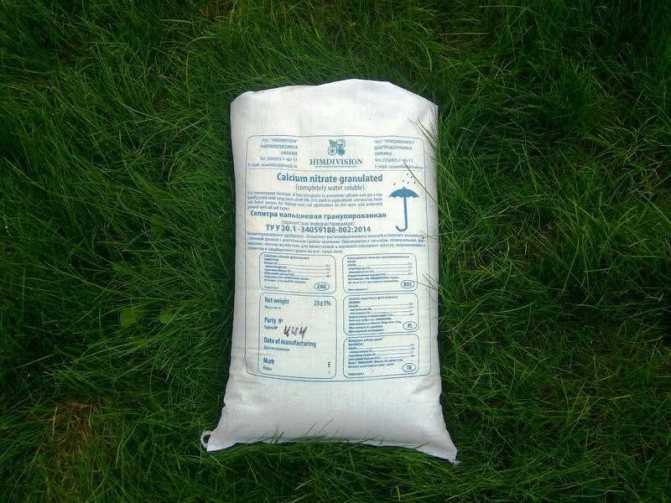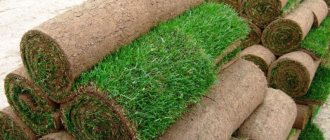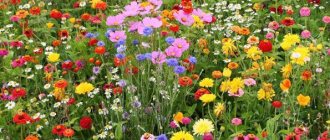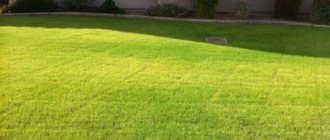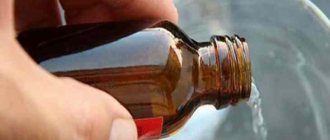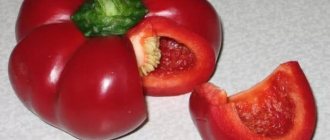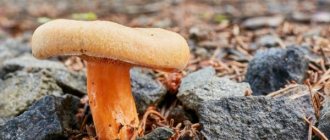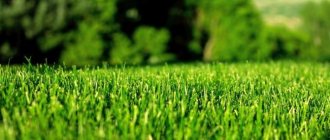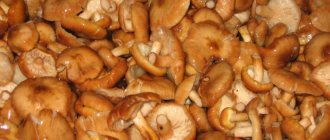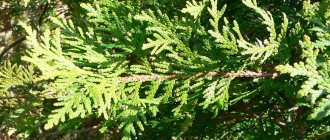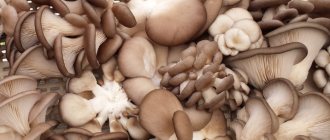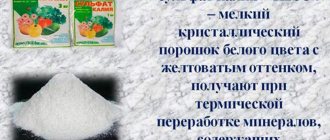Why fertilize your lawn?
Is it necessary to fertilize the lawn? Many summer residents are asking this question. In fact, it all depends on what kind of lawn the summer resident wants to have in his yard. If beauty does not matter, then you can do without top dressing. But if there is a desire to walk barefoot on soft, delicate bright green grass without a flaw, which grows normally and does not get sick, then you cannot do without top dressing.
Important!
Any fertilizer for the paddock is applied to well-moistened soil.
Fertilizers for the lawn are also necessary, as for garden crops, and if they are not applied, then over time the grass will begin to fade, turn yellow, become tough, lose its decorative effect, it may start to hurt and will have to be replaced. In addition, fertilization is the easiest method to ensure that the grass grows densely, and the seeds germinate quickly and easily at any time of the year.
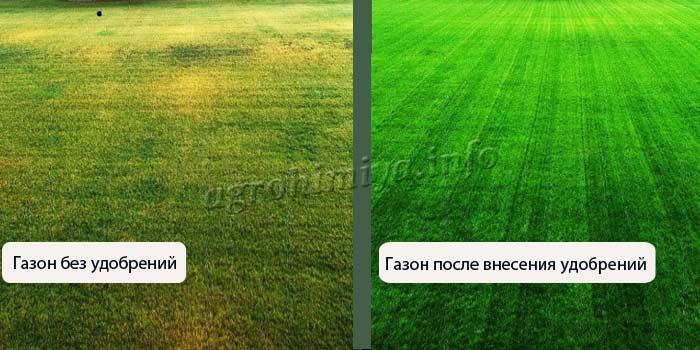
Photo of a lawn with and without fertilizers
The best lawn fertilizer
Check out these articles as well
- Fertilizer Fasco
- Chokeberry (Aronia)
- Top dressing of grapes
- Coffee as fertilizer
It's no secret for people who have a lawn in the yard that there is simply no better fertilizer. In different cases, in different periods of the year, certain drugs will be effective. The type of grass and soil also plays an important role in the selection of a good product. So it is impossible to name a universal fertilizer - here you need to look at each individual situation and then decide which fertilizer will be most effective.
Fertilize the lawn in two ways.
- The liquid method involves dissolving the fertilizer in water. The resulting solution is used for watering, irrigation. This is an effective option, since nutrients enter the ground already dissolved and are absorbed faster by the roots of the plant.
Important! To distribute the fertilizer evenly over the lawn, it is worth using special devices, such as a seeder.
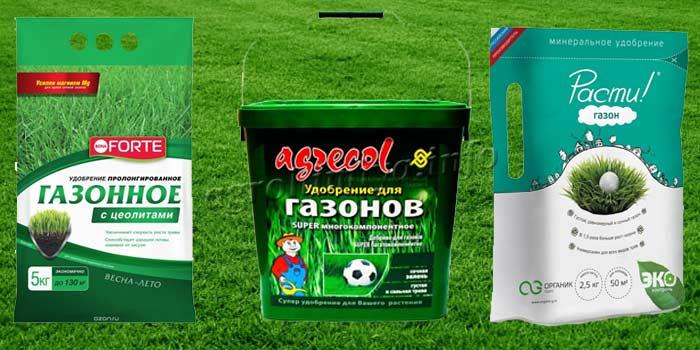

Photo of complex fertilizers for the lawn
- The dry method is only effective when the lawn is being sown. At this time, fertilizer is scattered on the ground, embedded in the ground and then the lawn is sown. As the grass grows, the fertilizer decomposes and nourishes it. But, when the lawn is already growing, this method does not give the best results.
Depending on the season, your lawn may require nitrogen, potassium or phosphorus. In order not to harm the lawn, you need to know which fertilizers they are in and which ones are recommended for the lawn. The best lawn fertilizers are:
- Nitrogen: urea, ammonium nitrate.
- Potassium: potassium nitrate, potassium sulfate, potassium magnesium, potassium chloride.
- Phosphorus: phosphate rock, superphosphate, precipitate.
The dosage is indicated on the package. So, for example, in the case of ammonium nitrate, only 30 g / m is needed. sq.
Pocon
For this manufacturer, lawn care products are not the main specialization, therefore, fertilizers for grassy lawns are present in the assortment in the only version - a granular mixture of prolonged action with a composition of NPK 30: 7: 8 with the addition of 2 MgO + 9 SO3, packaged in buckets of 900 d. The product is placed in the upper loosened soil layer at the rate of 20 g per 1 m2 of lawn area, after which the grass is watered abundantly so that the fertilizer starts to work. You can find this lawn fertilizer at large gardening stores like Obi.
Lawn pocon
Complex fertilizer for the lawn
Complex mineral fertilizers, on the one hand, make it easier to feed the lawn, on the other hand, they can do much harm. We can say with confidence that you need to use them only according to the instructions.
- «Fertika. Lawn. Spring Summer"Contains NPK at a concentration of 11.3: 12: 26. Used from mid-March to mid-June every 2 weeks. If too much is applied, the lawn will grow rapidly and may eventually begin to die off.
- «Fertika. Lawn Autumn"NPK 6:13:36, there are also trace elements. It is used from the end of August to the whole of September.
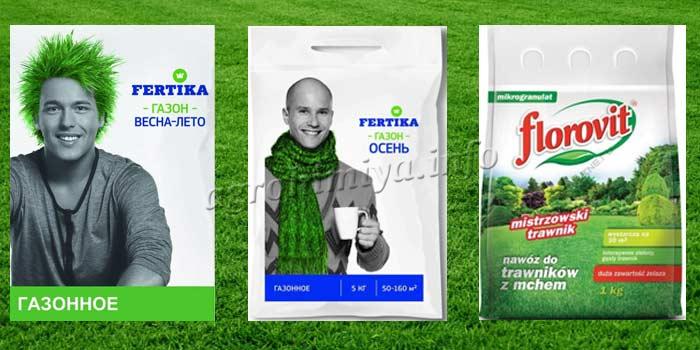

Photo of Fertika and Florovit fertilizers
- «Activin. Summer autumn»Contains NPK in a ratio of 12: 5: 20. Has a long-term effect (prolonged).
- «Agrecol»N - 12%, P - 1.5%, K - 9% and trace elements. It is used from spring to late summer only 3 times. Once in April, once in May and again in July.
- «Florovit»Contains NPK 18: 2: 9 plus additional iron. Used in spring and mid-summer. It is applied only in dry, cloudy weather.
Yara
There are a lot of good complex fertilizers for fertilizing the lawn, but not all manufacturers produce more targeted fertilizers.
The Norwegian Yara boasts an effective lawn growth formula (1.3 and 12 kg packs). The high content of nitrogen in the nitrate form contributes to the rapid formation of dense and high-quality turf in all varieties of lawn grasses.
The agent is scattered over the soil surface at the rate of 20-30 g per meter of plot area and poured abundantly with water. You can repeat feeding in a month.
Yara lawn fertilizer
Organic lawn fertilizers
We recommend reading our other articles
- Fertilizer Kemira Lux
- Calypso insecticide
- Coffee as fertilizer
- Gaillardia flower
Organic fertilizers are not as nutritious for the lawn as mineral fertilizers, but they can also be used.
- The overripe manure is crushed and spread over the lawn. The disadvantage is that it will be difficult to walk on it, so a solution of 1 kg / 10 liters can be used.
- Poultry droppings are diluted with water in a ratio of 1:10 and insisted for a week. The resulting solution is added at the rate of 5 liters per square meter.
- Low-lying peat is applied, like manure (crushed and scattered over the site). It is better to do this in early spring, before the lawn germinates or in late autumn. 2 buckets are added per square meter.
Moss on the site - how to protect the grass
In addition to top dressing, the area with grass needs timely removal of moss. This is a representative of the plant world that does not have roots. It grows where there is moisture and little sunlight.
If the moss has taken root on the lawn, it means that the soil is acidic. It's time to remember about lime and organic fertilizers.
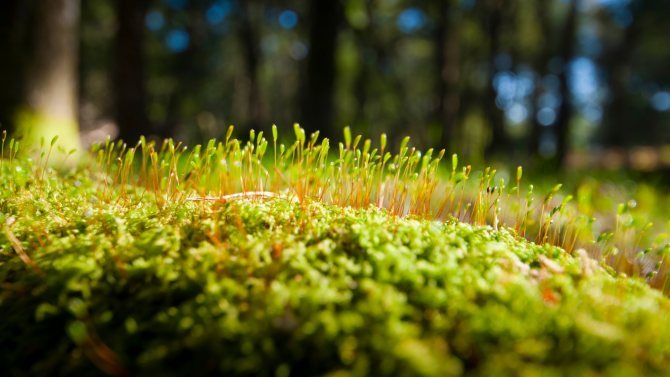

Moss is an indicator of acidic soil Additional activities:
Fertilizer for the lawn in spring
It is necessary to apply fertilizer for the lawn according to certain rules, namely seasonally. Some fertilizers are important in the summer, others in the spring, and still others in the fall, and if you mix them up, the lawn can die.
In the spring, the lawn is fertilized as soon as shoots have appeared. For processing, you can use complex preparations of prolonged action. They are enough for 2 months, because such fertilizers contain an abundance of nutrients. Complex fertilizers are used according to a certain scheme - first they water it so that the earth is soaked 20 cm deep, then top dressing is applied.
Important!
It is necessary to apply fertilizers to the lawn strictly according to the instructions indicated on the package, so as not to provoke a burn.
On average, if fertilization is done independently, you need to take 1.5 kg of nitrogen, 1 kg of potassium and 0.5 kg of phosphorus per hundred square meters. In complex fertilizers, the concentration and amount of these substances may differ, but this is normal - they are used only according to the instructions, while obtaining high efficiency.
General rules and recommendations
Consider the main points that need to be considered when feeding lawn plantings:
- Complex mineral formulations are not suitable for fertilizing young grass. They are applied only to the lawn of the second year or 1.5 years after planting (in the case of a roll variety).It is better to feed young grass with organic matter and do it before sowing. If the land is fertile, then fertilization is not necessary in the first year.
- In the country, it is more convenient to scatter fertilizers with your hands, using protective gloves. The granules are scattered first along the lawn, then across. The amount of fertilizer should be calculated according to the area of the plot.
- Preparations in liquid form are applied using a watering can in a similar way to the previous version.
- Before applying fertilizers, weeds are removed, and after application, the lawn is watered.
- Uneven spreading may result in burnt grass spots on the lawn. In this case, feeding is stopped and intensive watering begins.
Caring for a green lawn is not difficult, you just need to learn the basic rules and methods of fertilization.
How to fertilize the lawn in summer?
In summer, mostly potash and nitrogen components are introduced onto the lawn. It is they who maintain the decorative appearance of the lawn and do not allow it to hurt, dry, or turn yellow. Top dressing is carried out only on a cloudy day. In this case, you can take a complex fertilizer or use a potash mixture, and after 1-2 weeks also apply nitrogen fertilizer.
Fertilizer alternation is the key to a good lawn. At the same time, the grass receives the whole complex of useful substances, and pests and diseases are often frightened by new means, even if it is not an insecticide or fungicide.
Summing up
Each fertilizer taken separately is famous for its effectiveness and benefits, but only a few of them are essential for vegetation to stable growth, bright colors and resistance to diseases and low temperatures.
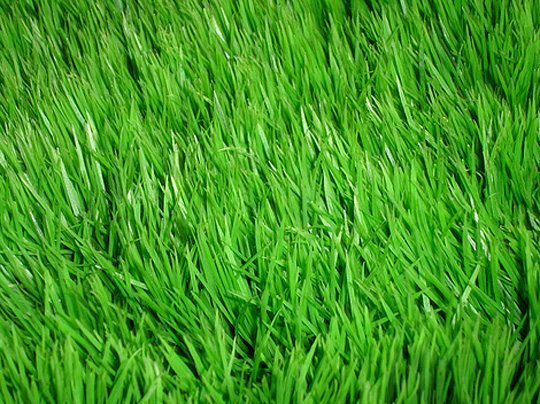

There are many factors to consider for proper feeding: the right time of the year, the appropriate type of fertilizer, its volume and weather conditions. It will take a lot of effort to maintain the aesthetic appearance of the lawn at the highest level, but the effort is worth it!
How to properly care for your lawn, the secrets of proper feeding and the optimal time for it - all this can be found in this video. Useful and relevant information for both beginners and experienced summer residents.
Fertilizing the lawn in autumn
Fertilizers that are applied in the fall are aimed at the survival of the grass. Due to the additional elements, the lawn forms a developed root system in order to survive in winter. The main food is provided by phosphorus and potassium.
Important!
Nitrogen is by no means added to the autumn dressing of the lawn, therefore, complex preparations are rarely used in the fall - at your own peril and risk.
Apply autumn dressing 2-3 weeks before frost. Depending on the region, this can be mid-September, early October, or even November. It is better to use fertilizers in dry form, if it is October-November, or in liquid form, if it is the beginning of autumn.
Aeration
In addition to the planned autumn feeding, experienced landscape designers recommend carrying out a lawn aeration procedure before winter - piercing the turf with a garden pitchfork and slightly raising the top of the soil.
In addition to forks, aeration can be carried out using special devices that are worn on shoes, or with an electric aerator.
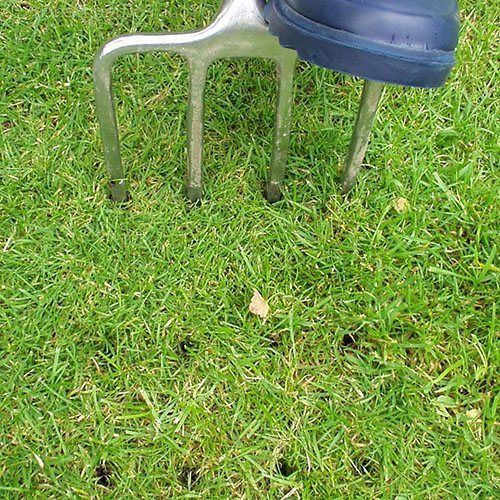

Aerating the lawn with a pitchfork
This technique improves soil drainage, allows moisture to escape to the lower layers of the soil and activates the supply of oxygen to the root system, which has a beneficial effect on the appearance of the grass stand.
Correctly and timely feeding your emerald lawn in autumn, you will be able to enjoy its luscious greenery already in the beginning of spring, pleasing to the eye after the winter snowy months.
The lawn is a decorative element of the garden that needs feeding. Not only the growth of the grass depends on the timely introduction, but also the successful wintering. It is necessary to pay special attention to the autumn feeding, so that this "green carpet" will please with its density for the next year. Today we will tell you how to fertilize your lawn in the fall.

